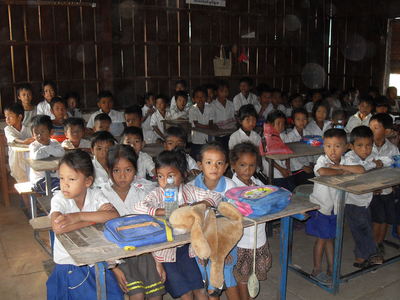About Cambodia
The Nation
Cambodia is a compact country situated on the south eastern part of the Indochina peninsula in South-East Asia. It shares borders with Vietnam, Laos and Thailand all of which are larger in area. It has a rich and long history dating back 6,000 years. The Angkor Empire (9th – 15th centuries) represented the nation’s glory days when it dominated much of South East Asia. The famous Angkor temple complex was constructed as a Buddhist monument during this period.
Cambodia’s modern history has been traumatic and tragic in large part. As a neighbour, Cambodia was caught up in the war in Vietnam which created circumstances resulting in the unprecedented intense bombing of the country and the devastating 4 year rule under the brutal Khmer Rouge regime.
Cambodia’s modern history has been traumatic and tragic in large part. As a neighbour, Cambodia was caught up in the war in Vietnam which created circumstances resulting in the unprecedented intense bombing of the country and the devastating 4 year rule under the brutal Khmer Rouge regime.
The People
Cambodia has a population of 16 million of predominantly young people (more than half are less than 25 years old). Most are rural dwellers and farmers with just 10 per cent of the population living in Phnom Penh, the nation’s capital. Ethnicity is overwhelmingly Khmer (more than 90%). Small but significant communities of Vietnamese and Chinese Khmer operate mostly as merchants in Phnom Penh and urban areas. Buddhism is the overwhelming religion (95%) which is also the main religion of its neighbours. Khmer is the language of most people (95%).
Historically Cambodia fought regular wars with its neighbours for three centuries until the French imposed control from the mid-19th century. Conflicts continued in second part of the 20th century but the neighbours now enjoy respectful and peaceful relations.
Cambodia operates a market economy which has been growing strongly over the last decade. The country has enjoyed an average 7% growth each year for more than a decade. This has dramatically reduced the level of poverty. Cambodia is moving to lower middle-income status through strong growth in garment manufacture, tourism, rice production and construction. Whilst the lot of Cambodians is improving off a very low base, average income remains low compared with its neighbours with average income just half that of its Vietnamese neighbours and less than 2% of that of the average Australian.
Opportunities for human development will take further time to catch up with economic growth. Most Cambodians still experience poor health and education services, and many lack equality in a broad range of life opportunities. This is especially so for rural women and girls.
Historically Cambodia fought regular wars with its neighbours for three centuries until the French imposed control from the mid-19th century. Conflicts continued in second part of the 20th century but the neighbours now enjoy respectful and peaceful relations.
Cambodia operates a market economy which has been growing strongly over the last decade. The country has enjoyed an average 7% growth each year for more than a decade. This has dramatically reduced the level of poverty. Cambodia is moving to lower middle-income status through strong growth in garment manufacture, tourism, rice production and construction. Whilst the lot of Cambodians is improving off a very low base, average income remains low compared with its neighbours with average income just half that of its Vietnamese neighbours and less than 2% of that of the average Australian.
Opportunities for human development will take further time to catch up with economic growth. Most Cambodians still experience poor health and education services, and many lack equality in a broad range of life opportunities. This is especially so for rural women and girls.
Lifestyle
Religion is the major source of the Khmer culture which has been observed over many centuries. The many temples are a feature in towns and villages and play a central role in the lives of the people. The Khmer architecture of the temples is inspired by Buddhist and Hindu mythology.
The “Krama” or checkered scarf is a versatile and unique item of Khmer clothing. It distinguishes Khmer from their Thai, Viet and Laotian neighbours.
Cambodians are warm, shy and friendly people. As is the Asian way, family is integral to Cambodian life. Khmer culture is hierarchical so that higher levels of respect are afforded older members of communities. Khmer visual arts, music, dance and literature stretches back centuries, influenced mostly by the Angkor period.
The “Krama” or checkered scarf is a versatile and unique item of Khmer clothing. It distinguishes Khmer from their Thai, Viet and Laotian neighbours.
Cambodians are warm, shy and friendly people. As is the Asian way, family is integral to Cambodian life. Khmer culture is hierarchical so that higher levels of respect are afforded older members of communities. Khmer visual arts, music, dance and literature stretches back centuries, influenced mostly by the Angkor period.






